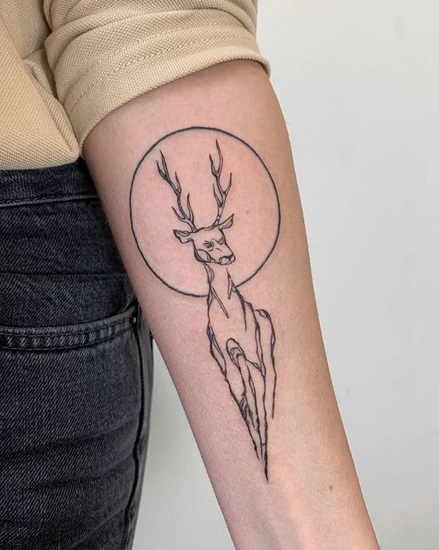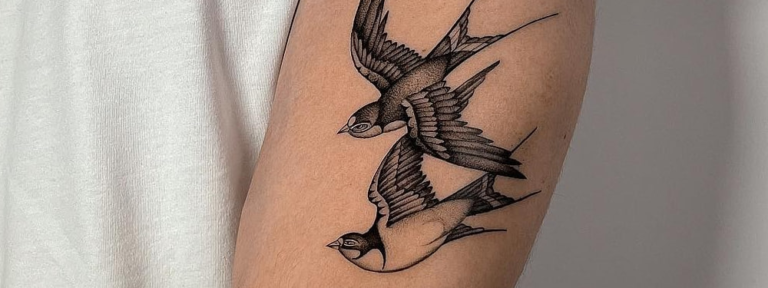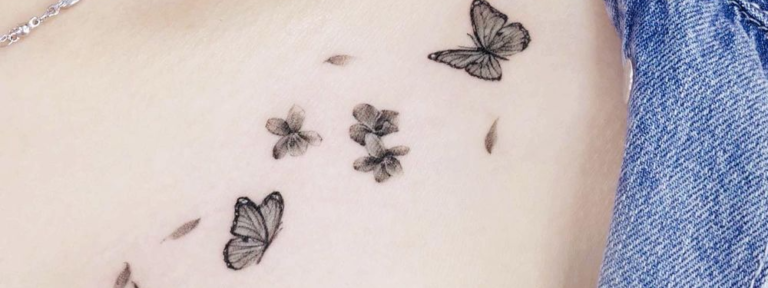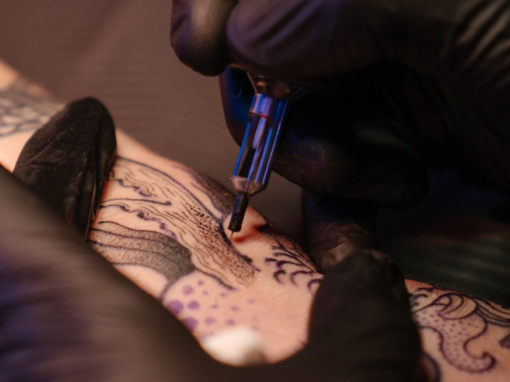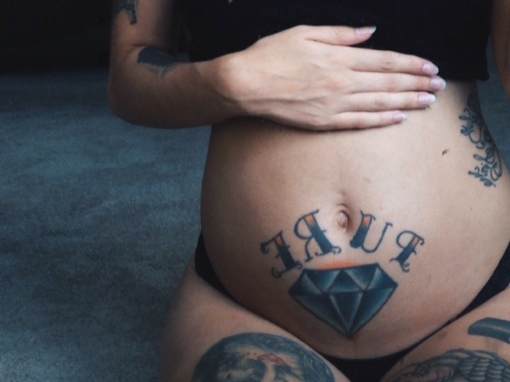Thinking about tattoo scratchers often invokes images of poorly done, unsanitary, and regrettable tattoos. And indeed, they are, but what is the reason behind it? Is there something more behind the stigma of scratch and stick-and-poke tattoos, and how are they different from actual self-taught and professional tattoos?
In this article, we’ll reveal the truth behind tattoo scratchers and explain how they differ from professional hand-poke tattoos, share more than 60 design ideas for handmade tattoos, and even talk about where they became a cultural heritage.
Who Are These Tattoo Scratchers?

At its core, the term “tattoo scratchers” refers to individuals who give themselves or others tattoos without proper training, professional equipment, or adherence to hygiene and safety standards.
Now, there is a HUGE difference between self-taught artists and scratchers. Self-taught tattooists, who value their pursuit and want to grow, will eventually find a way to get proper training and licensed tools, and, most importantly, get to work in a studio.
And scratchers, on the other hand, often don’t even bother buying fake skin for training and use themselves, their friends, or actual clients for test subjects, which may lead to serious health consequences, but we will get to that later. Most of the time, they have stick-and-poke needles in their arsenal, although some of them manage to get a machine (obviously not licensed).
Scratchers have their reasons for their hobby. Some of them think that working in their basement, bedroom, or kitchen makes them cool (it’s really not, they’re just delusional). Another reason could be a simple need to save money, and some think that they will do better themselves because “no one understands their ideas”.
Types of Machine-Free Tattoos
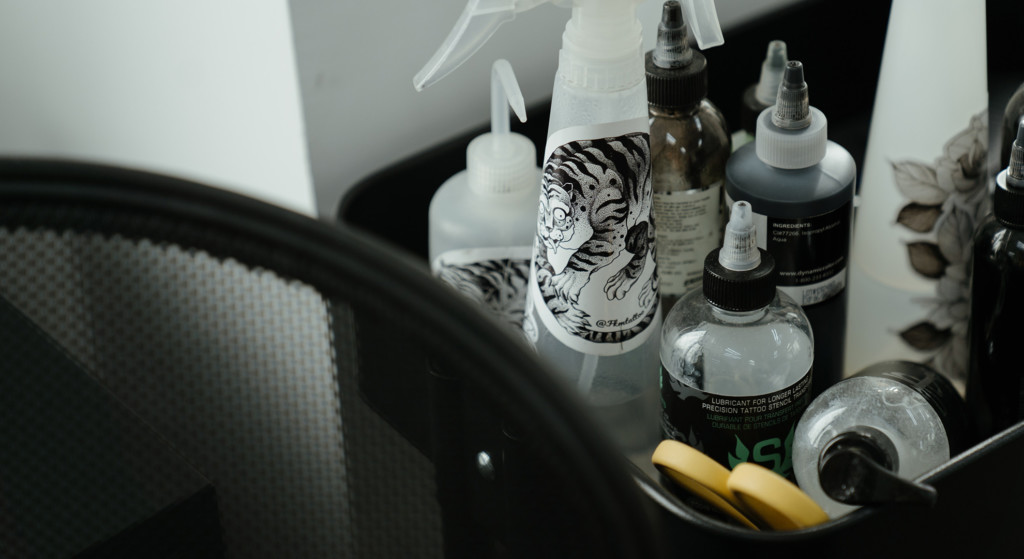
Tattoo scratchers refer not only to the amateurs themselves but also to the style of tattooing in general. As mentioned earlier, some amateurs can find a cheap tattoo machine, but most often they use needles for manual tattooing.
And although handmade tattoos are the oldest way of tattooing with a huge history, perhaps such amateurs have become one of the reasons why this style of tattooing has faded into the background among professional artists.
Let’s take a closer look at the types of handmade tattoos that are now the most common.
Hand-Poke Tattoos
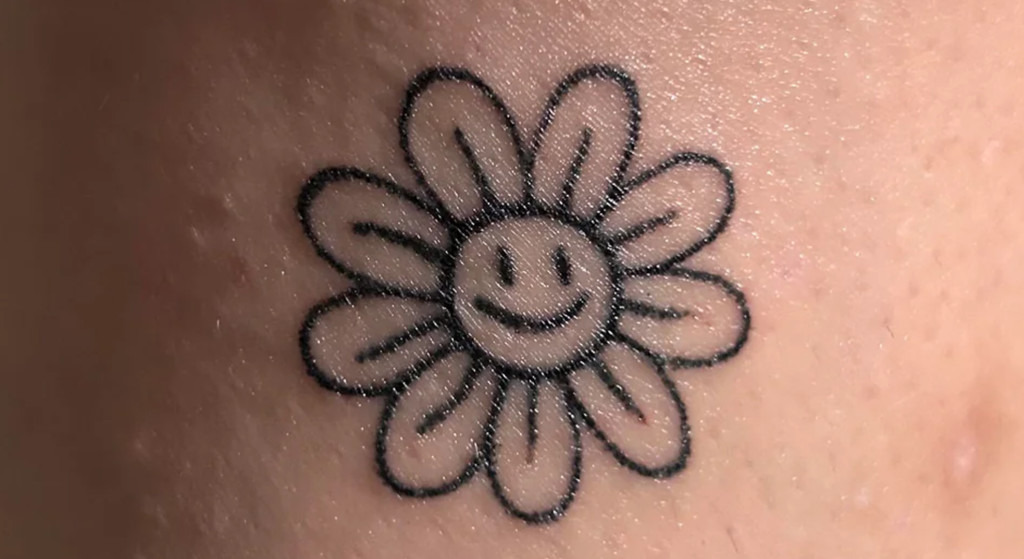
Also known as a stick-and-poke or machine-free tattoo, this method involves manually inserting ink into the skin using a hand-held needle. It’s a simple and traditional technique that can create a variety of tattoo designs.
Often featuring minimalist lines and shading, hand-poke tattoos are characterized by their delicate and organic appearance. Artists who specialize in this technique bring a level of mindfulness and precision to their craft. The result is tattoos that exude a unique sense of intimacy and artistry.
The beauty of hand-poked tattoos lies in their simplicity and handmade quality. Before finalizing your design, discuss your ideas with a professional tattoo artist who can offer guidance, ensure proper execution and aftercare, and help bring your vision to life.
In the following section, we’ll delve deeper into one of the cultural hand-poke tattoo practices that are still thriving and preserved nowadays.
Chicken Scratch Tattoos

Have you ever had the impression that there is a difference between a “bad tattoo” and a “good bad tattoo”? As if you can tell when a messy tattoo is intentional and has its charm, and when it’s just a bad piece of work. Uneven lines, like they were scratched on your skin, inconsistent shading, sketch-like style, and so on… Those can all apply to such things as “chicken scratch tattoos”.
Although they may appear unprofessional, this style doesn’t always mean solely poor work. In some cases, it’s characterized by an intentionally rough and unfinished aesthetic, reminiscent of a sketch on the canvas of skin. While these tattoos may lack the refinement of professional work, they have a distinct charm and authenticity that resonates with those seeking a more drastic expression of self.
But you don’t have to go to some kitchen-DIY artist for this type of tattoo, many professional artists are ready to realize such silly ideas more safely. DIYDIY stands for Do-It-Yourself inking is usually the one that is the talk of the town and puts shame on professional hand-poke artists. We advise you to avoid such ‘artists’ as much as you can, as they are unfortunately notorious for unhygienic working conditions.
Where a Hand-Poke Truly Thrives: The Tebori Technique
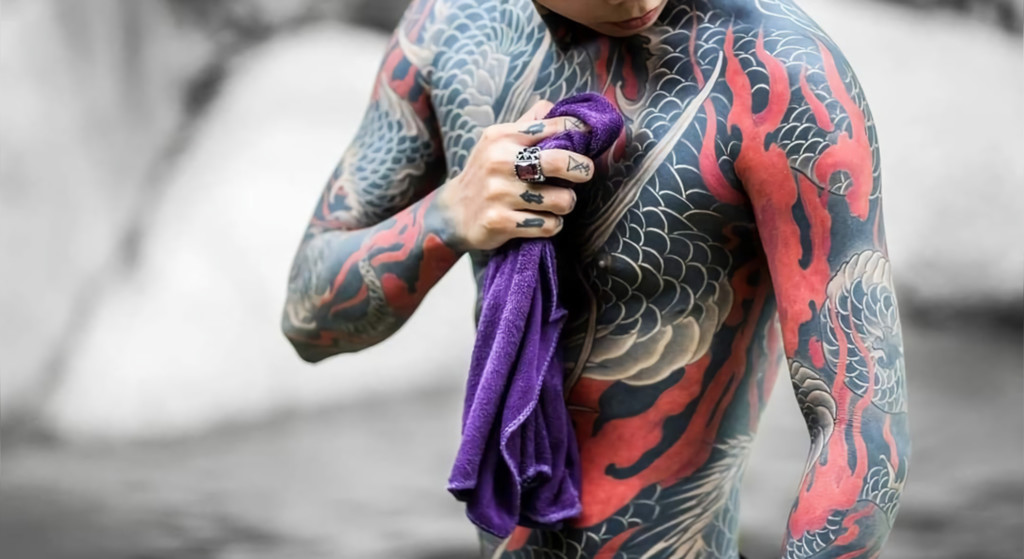
While modern tattooing techniques have largely shifted towards electric tattoo machines, traditional hand-poked tattooing is still preserved and practiced within some cultures today. The most famous find in hand tattoo culture (and perhaps one of the most beautiful) is the Japanese technique called tebori. It translates to “carving by hand” and reflects the intricate and meticulous nature of the process.
Tebori’s technique relies solely on the tattoo artist’s skill and precision. The artist uses the tool named “nomi”, which consists of multiple needles attached to a bamboo or metal handle, using tapping or poking motions to create the tattoo design. The needles of this tool are not driven in a vertical direction, as is the case with machines or stick-and-poke needles, but rather at a slant.
You won’t be able to buy those tools on the Internet that easily because each artist makes these tools on his own. “But how do they differ from tattoo scratchers, then?” you may ask.
Well, traditional tebori experts are skilled artists who honor a rich cultural heritage and adhere to strict standards, while scratchers are untrained individuals who lack expertise, proper tools, and a deep understanding of the art and its significance. We’re not saying that there are no tebori amateurs at all, but you could only find them in some nook alley in Japan, which is very unlikely because even these amateurs respect this style.

Tebori is often associated with traditional irezumi tattoos. Irezumi is a style of Japanese tattooing that features large, colorful, and complex designs, often depicting mythological creatures, folklore, and symbols.
It is very difficult to find a good tebori artist in other countries because this is purely a Japanese technique and is most developed in Japan. If you manage to find such an artist, it is most likely a native Japanese who reached the world level and went to other countries to develop their skills. However, you can browse through our catalog of tattoo artists, where you’ll be able to find the best tattooist for you based on their style and state.
“In horimono, the body is a canvas for one work. That’s the difference between Western and Japanese tattoos.”
Horihiro Mitomo, a Japanese tattoo artist
60+ Hand-Poke Tattoo Designs
When choosing a design for a hand-poke tattoo, consider choosing something that holds personal significance, resonates with your interests, or has symbolic meaning. In this section, we will tell you about ideas in both stick-and-poke and tebori techniques.
Tebori Tattoo Ideas
Tattoos in tebori technique can vary from traditional motifs like ukiyo-eUkiyo-e is a traditional Japanese art form that originated during the Edo period (17th to 19th century), and translates to pictures of the floating world. It primarily consisted of woodblock prints and paintings depicting scenes of everyday life, landscapes, historical tales, kabuki actors, and beautiful women to something more contemporary, the choice is yours.
Sleeves
One of the most common uses of this technique is on sleeves. The body literally becomes a canvas for a work of art, with blurred edges and gradients adding to the aesthetic.
Leg Sleeves
Just like the arm sleeves, your legs are a good alternative for the tebori technique.
Shoulder
The options can be either just a tattoo on the shoulder or a combination of the shoulder and the sleeve.
Bracelet
A very simple, stylish, and modern choice for a tattoo in Japanese style if a full-body tattoo is too much for you.
Full Body Variations
This style of tattooing is definitely not for everyone, but it is exactly the type of tebori technique that was widespread at the very beginning.
Casual Hand-Poke Tattoo Ideas
If Tebori isn’t for you, we’ve collected dozens of ideas for more familiar and simpler hand-poke tattoo designs. You can also take a look at this article with even more ideas for simple tattoos.
Animals
Animal tattoos can have personal significance, representing your favorite creatures, pets, or animals that have a special meaning in your life. Or they are simply very adorable, just take a look at these photos and try to prove otherwise!
Floral Motifs
Floral tattoos are unique and customizable, allowing you to combine colors, shapes, and styles to create a design that reflects your individual personality and aesthetic preferences.
Constellations
A very cool minimalist idea with a hidden meaning. It can be your favorite constellation, zodiac sign, or star motif. You can even try to find a pattern in your moles and capture a constellation symbol by connecting them with lines. But we ask you to take precautions and not to tattoo directly on moles.
Meaningful Words, Phrases, And Quotes
Quote tattoos allow you to express your beliefs, values, or personal philosophies in a concise and meaningful way, and serve as a reflection of your identity.
Abstract Designs
The power of stick-and-poke tattoos is that you have an unlimited number of ideas, you can literally draw your own little sketch and show it to the artist.
Matching Tattoos
Stick-and-Pokes are perfect for small tattoos with your closest friends and loved ones. You can even book a trip to the tattoo artist together and get not only a stunning tattoo but also some fun memories.
Answer From an Expert: Is a Tattoo Scratcher Really This Bad?
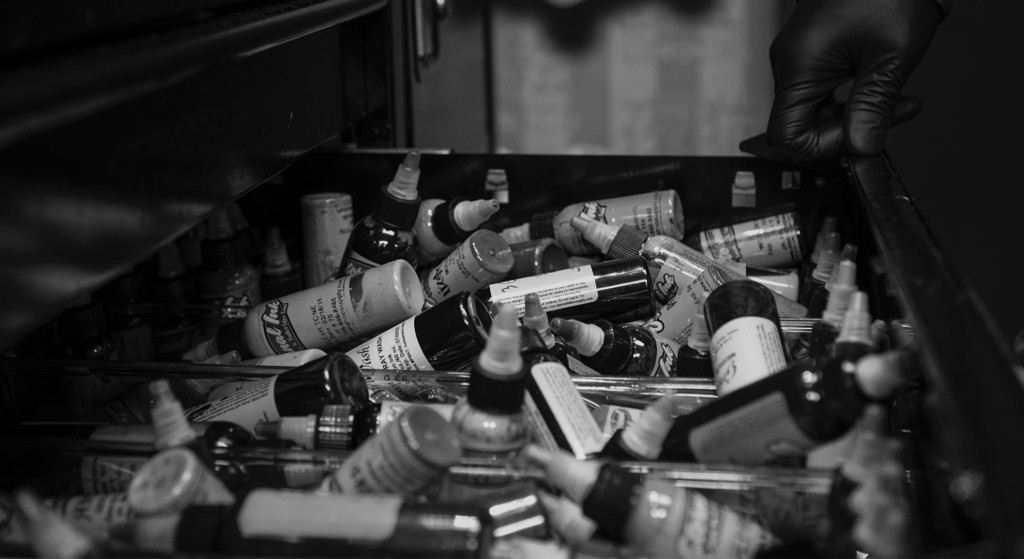
If you think it’s really groovy to get a cheap or free tattoo from a friend or friend of a friend, think again. Ask more about how they work and if the answer sounds like “It’s just a hobby on the side” or “I do everything at home”, this is a red flag.
“There are two sides of handmade tattoos. The first one is standard, where hand-poke is a cultural heritage or the artist just works in this style. The second one can be called ‘I don’t have money for a tattoo machine, so I’ll buy a needle and stab all my friends with botches’. Nowadays, it is very difficult to find good stick-and-poke tattoo artists, and so these scratchers see it as a way to make money.”
Kateryna Iliukhina, a tattoo expert on board
Scratcher tattooing, performed by untrained and unskilled individuals, poses significant health risks, meaning that it can affect both the short and long-term well-being of tattoo seekers. God bless that you only get a botch that can be removed or covered up. It might be a little harder to deal with a tattoo blowout, but still manageable.
In the worst-case scenario, some potential health risks associated with scratch tattoos include skin infections, scarring, allergic reactions, bloodborne pathogens, etc.
Final Thoughts
We wish all tattoo scratchers would just keep their visions to themselves, without risking other’s health. After all, it’s their business whether they want to make their own DIY tattoo, but please, just let them be, do not interfere, and do not agree to their offers for your own safety.
If you’re looking for a quality handmade tattoo in your state, feel free to reach out to tattoo artists on our site. It’s a scratcher’s body and their choice to do whatever they want with it, not yours. And it’s not worth saving a dollar on questionable work.
FAQ
🤔 What Is a Kitchen Scratcher Tattoo?
A kitchen tattoo scratcher refers to a type of amateur or Do-It-Yourself tattoo that is done in a non-professional setting, such as a kitchen, or living room.
👀 How Long Does a Tattoo Scratcher Last?
Like other tattoos, tattoo scratchers are permanent. Moreover, it can deal permanent damage to your health. At best, you just get a terrible tattoo, which could still be possible to remove or cover up. And at worst, you might get scars, infections, or even bloodborne diseases such as hepatitis B and C, or HIV.
💪 Can I Become a DIY Tattoo Scratch Artist, Too?
While anyone can attempt DIY tattooing, we are strongly against it due to health risks and the potential for poor outcomes. Professional training, hygiene, and equipment are essential for safe and quality tattoos.
🎨 What’s the Difference Between a Professional Hand-Poke Artist From a Scratcher?
A professional artist has proper training, follows hygiene standards, works in a studio, and produces high-quality, well-designed tattoos. Dabblers lack these credentials and may pose health risks.































